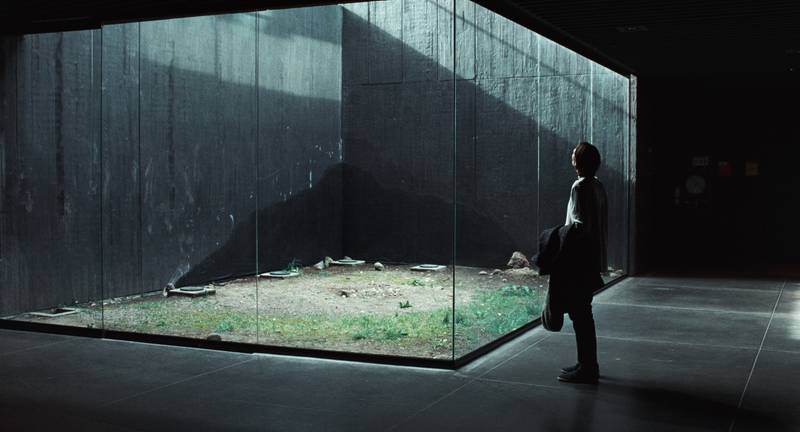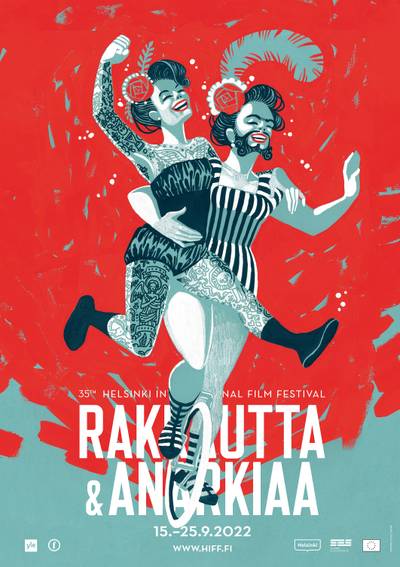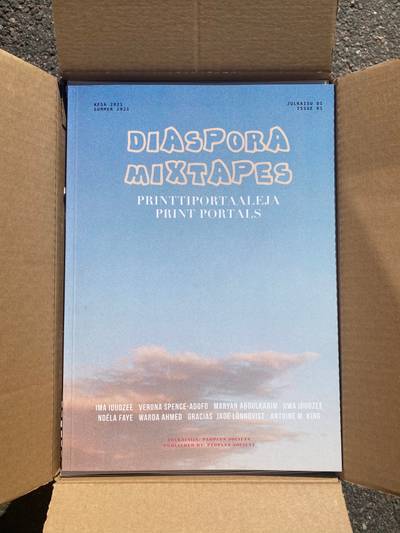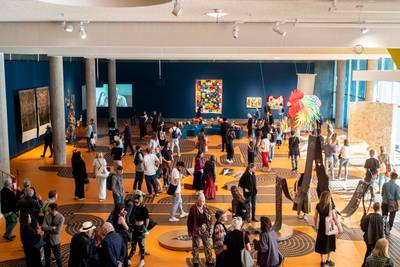

Film still from Apichatpong Weerasethakul’s Memoria
Alba Ala-Pietilä (b. 2001) is an aesthetics and film studies student at the University of Helsinki. At the moment she’s especially interested in feministic approaches to art and the way it is studied as well as surrealism and surrealistic qualities in art. Painting herself, she’s currently examining the associative prospects of the abstract form, both in the method and the result.
A Review of Apichatpong Weerasethakul’s Memoria
Memoria | Directed by Apichatpong Weerasethakul | Duration: 2h 16min | Language: English, Spanish
As movie theatres have opened up again, the film enthusiasts of Helsinki were delighted to enjoy the diverse selection of the Helsinki Film Festival (also known as the Love and Anarchy Film Festival) from September 16th to September 27th, 2021. Entering a theatre has rarely felt as thrilling to me as it did on the 19th, but the effect had surprisingly little to do with the gaping gap the Covid situation had left in the place of cultural experiences – it was the piece of Apichatpong Weerasethakul’s art, Memoria (2021), I was eager to see.
The director-screenwriter’s film Uncle Boonmee Who Can Recall His Past Lives from 2010 had been a significant experience for me some time ago, and the international acknowledgement of his latest film (for instance, the Jury Prize at the Cannes Film Festival in the summer of 2021) surely didn’t decrease my excitement. The key aspects of both Uncle Boonmee and Memoria revolve around the act of remembrance and the frailty of the past as it solely hangs on our memory, but in Memoria, the process through which Weerasethakul leads us to the matter is as peculiar as ever.
The captivating nature of Memoria depends on the work of some notable artists. The eccentric Tilda Swinton stars as the leading figure, Jessica, whose life suddenly starts revolving around a strange, unrecognizable sound that keeps interrupting her everyday life. The urge to find it is intertwined with and partly hidden in the subtlety of her obsession for more. Swinton’s acting is stripped of emotion but not unfeeling, for she has the great skill of reserving considerable emotion behind the minimalistic expression.
To me, one of the most eloquent aspects of the film was the cinematography of Sayombhu Mukdeeprom, who is best known for his prior work on Uncle Boonmee and Luca Guadagnino’s film Call Me by Your Name (2017). The shots are not only beautiful in the photographic sense, but create a feeling of drifting that simultaneously leads the viewer up close and keeps them at a hand’s distance. Through the joint work of Weerasethakul, Mukdeeprom and Swinton (to name a few), a picture of a strange woman in a stranger situation is drawn. The supernatural aspects of the film, starting with the mysterious disease that troubles Jessica’s sister Karen (Agnes Brekke), paired with the prolonged and even meditative shots, make the viewer feel like they’re on a deeply but tactfully disturbing holiday. Indeed, the motif of disruption seems to be the leading force of Memoria.
Though the imagery might seem random at first — or at least artistically motivated — Weerasethakul’s choices are ultimately nothing but. All of the parts work together in an effort to build a whole, a weave of pictures and life; a weave with a first impression from a totally different place than the definitive feel it transmits. What we can’t quite grasp or wholly understand, which might be a considerable part of the film to be frank, we can still sense working towards an answer. Again, and again the viewer suspects that something’s not quite right behind the reduced appearances.
As Jessica goes on with her everyday life, haunted, intrigued and obsessed with the mysterious sound that won’t leave her alone, the viewer adapts to her pace. We sit and wait with her and forget ourselves for a moment. The tardiness of the shots seems to underline the ordinariness of the mundane, which further heightens the effect of disruption as the dominant sound continues to echo abruptly.
The cast and production crew of Memoria is delightfully international. The bilingual film takes place in Colombia and the struggle that carrying on a discussion in Spanish occasionally brings to Jessica is not hidden but rather emphasized. Fortunately, this is not done in a culturally depreciative way since it mainly transmits a sense of her overall confusion; her words aren’t sufficient enough to explain the unknown sound or the effect it has on her.
What makes Memoria an outstanding piece of art is its radical stillness. While Alfred Hitchcock has been endlessly quoted for stating that movies are like life with the boring parts cut out, Weerasethakul knowingly goes against the fast-paced norm. While this might sound like I’m deeming Memoria boring, in fact, the film digs deep into the humane in a unique way that is nowhere near dull. Its slowness works successfully in its favor as it comes closer to life than most.
I have come to appreciate the film fully through writing about it for it asks for time in a manner that comes notably close to films such as The Mirror (1975) by Andrei Tarkovsky or Koyaanisqatsi (1982) by Godfrey Reggio. All of the three also set their own, leisurely rhythm right from the beginning, which the viewer must adapt in order to get past their appearances. Only through that is it possible to strive towards understanding.
Weerasethakul seems to highlight the importance of the silent and even forgotten memory of humankind. Even though Jessica comes closest to finding answers to her search in the midst of nature, retrieving from the city to the silence of the natural world isn’t an unprompted decision but rather a consequence. This seems like an awfully familiar situation as the accelerating chaos that is the climate crisis is a symptom of the way we have been estranged from caring. The force of the sound was Jessica’s motive for observing her environment differently, but how big a distraction do we need to finally start fixing our way of living? How alienated will we be from our roots by then? And most importantly, will there remain anything left to mend? The sound appears in Jessica’s life just as her sister falls ill, but still, somehow even a pandemic hasn’t sufficiently opened our eyes to the complete disarray of the world.
Memoria is, in the end, one of those artworks that are not to be viewed through existing preconceptions. It is most likely impossible to face an art piece with zero expectations as our own personal frame of reference is inseparable from ourselves, but accepting the story as a form of being is to me the key to viewing Memoria. My mind, left in somewhat a serene turmoil after the final frame, still hasn’t stopped rotating around what I couldn’t comprehend. The ominous merges in the astonishing and my rhythm can’t quite tear away from that of Jessica’s.








